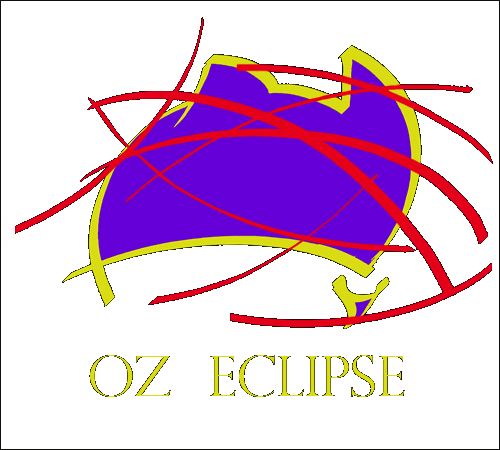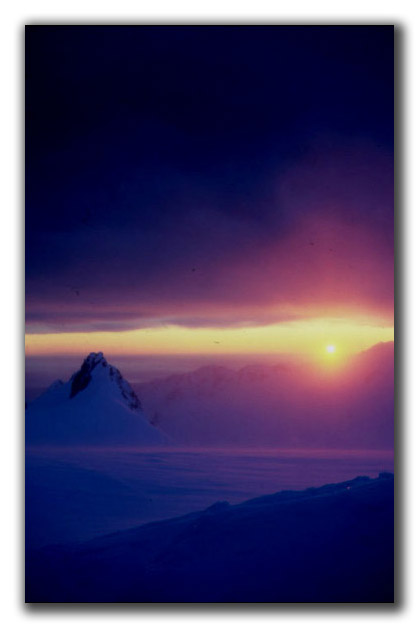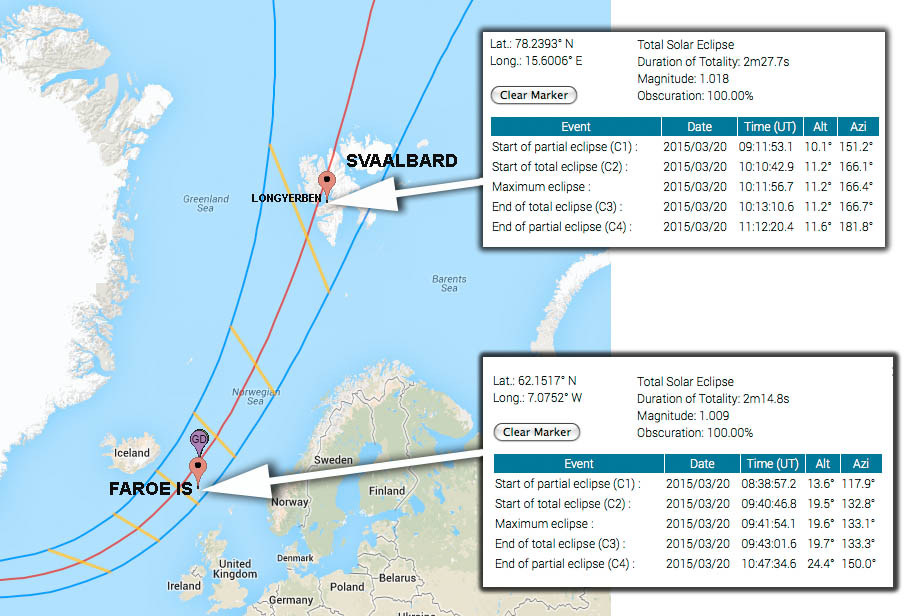
 |
WAITING FOR THE
SHADOW
SOLAR AND LUNAR ECLIPSE OBSERVINGHOME PAGE |
|
|
 |
On
March 20th, 2015 a total eclipse of the Sun will be visible from a
swathe of the Arctic Ocean. The path of totality only makes landfall on two island groups, Faroe Islands and Svalbard. Prior to each solar eclipse since 2008, I have produced a collection of local circumstances and other relevant information for the eclipse as seen from my chosen observing location. Since 2010, I have collated this into a printable observer’s almanac or handbook that incorporates blank pages that can be used as a trip diary or for planning or recording observations. The travel diary has several pages for March 20th so that an account of the eclipse can be written up in detail for that day. This year I've decided to release the data or graphics as a web page. The data used to produce this publication is drawn from many on-line resources listed with each resource. The path of totality of the eclipse will only cross two land masses. The Faroe Islands, a Danish Territory located due north of Scotland and Svaalbard, a Fjord studded island located halfway between the north coast of Norway and the North Pole. Situated in the heart of the Gulf Stream in the North Atlantic at 62°00’N, the Faroe Islands lie northwest of Scotland and halfway between Iceland and Norway. The archipelago is composed of 18 islands covering 1399 km2 (545.3 sq.miles). The weather is maritime and quite changeable, from moments of brilliant sunshine to misty hill fog, to showers. The Gulf Stream encircling the islands tempers the climate. The harbours never freeze and the temperature in winter time is very moderate considering the high latitude. The population is 48,193 (1st February 2013). About 19,900 people live in the metropolitan area which comprises Tórshavn, Kirkjubøur, Velbastaður, Nólsoy, Hestur, Koltur, Hoyvík, Argir, Kaldbak, Kaldbaksbotnur, Norðradalur, Syðradalur, Hvítanes, Sund, Kollafjørður, Signabøur and Oyrareingir, while about 4,600 people live in Klaksvík, the second largest town in the Faroe Islands. (Source: http://www.faroeislands.com/default.aspx?pageid=9706§ionid=295 ) |

| Introduction | Sun/ Moon Rise/ Set |
Sun Altitude Eclipse Day |
Orientation- corona Sun's axis EQ mount alignment |
Sky at totality | Photographic Information | Power & Batteries | Further reading |